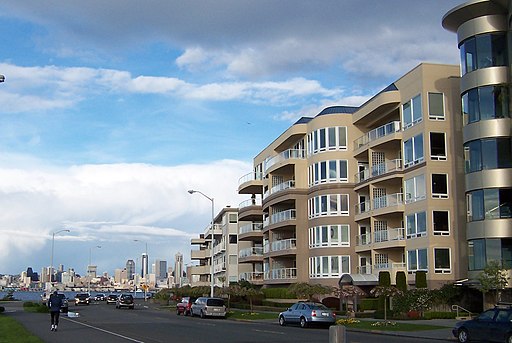 Last Thursday at the Mercer Island Community Center, Sound Transit held a Listening Tour to give residents a chance to comment on just about anything related to the East Link project. The open-mic night was well attended with an estimated 200 residents, from which 35 speakers were allotted 3 minutes each to speak. The meeting was attended by many Sound Transit staff, Bellevue Mayor (and County Council candidate) Claudia Balducci, WSDOT Secretary Lynn Peterson, and many Mercer Island council and mayoral candidates.
Last Thursday at the Mercer Island Community Center, Sound Transit held a Listening Tour to give residents a chance to comment on just about anything related to the East Link project. The open-mic night was well attended with an estimated 200 residents, from which 35 speakers were allotted 3 minutes each to speak. The meeting was attended by many Sound Transit staff, Bellevue Mayor (and County Council candidate) Claudia Balducci, WSDOT Secretary Lynn Peterson, and many Mercer Island council and mayoral candidates.
The tone of the conversation was one of polite exasperation, seasoned with occasional bursts of anger or bewilderment. Many commenters came prepared with talking points loosely organized around a list of special accommodations for Mercer Island residents proposed by the Vision Mercer Island group, namely:
- Permanent SOV access to HOV lanes
- Permanent exemption from I-90 tolling
- Resident-only parking at the Link Station
- Complete abandonment bus transfers on Mercer Island
- Dedicated and guaranteed seats for Islanders on Metro and Sound Transit buses
Each of these 5 privileges would be completely unique to Mercer Island. Despite this, if you followed the #listen2mercer hashtag you saw that speakers overwhelmingly felt that this was the least Sound Transit could do on their behalf. Comments were overwhelmingly negative about Sound Transit, about parking, and about any type of bus facility being built.
From urbanist, transit, land use, and social justice viewpoints, the conversation was very disappointing. In asking for resident-only parking at the Park & Ride, they are asking for an unprecedented appropriation of public space for the private use of the most privileged. In asking for untolled SOV use of HOV lanes, they are asking for a privilege no one else in the state enjoys. In asking to abandon the idea of bus transfers on Mercer Island, they are asking to pay for their aesthetic preferences with other commuters’ time and money.
Two doctors used that day’s crash on Aurora to stress their need to get on and off island quickly, seemingly oblivious to the fact that they were asking government to grant them special rights on account of their choice to separate themselves from their patients by a large body of water.
Perhaps most egregious, the consistent “othering “of nonresidents – to dust off a grad school phrase – was both offensive and provincial. One commenter called on Sound Transit and other “off-Islanders” not to be “pigeons that just come here, drop your s__, and leave.”
All of this fundamentally misunderstands the general access mandate under which public facilities operate. No one at South Bellevue Park & Ride scans license plates to root out those “moochers from Somerset” claiming “their” parking. Most people understand that people have a basic right to move freely on our transit and highways. All other transit facilities exist for the general benefit of any regional transit traveler, including Mercer Island residents who use other facilities regionwide.
And whether restricted or not, parking is not the answer, as parking is a niche product that fundamentally cannot scale. The current Mercer Island Park & Ride has 447 spaces, less than the capacity of a single 3-car Link train. Mercer Island and Sound Transit could spend $50m to build to build an enormous 2,500 space facility – larger than Tacoma Dome Station – and it would still only fill 5 trains, less than an hour’s worth of Link service.
Fast, frequent bus service is the answer to connect to Link, both for Islanders and for the entire I-90 corridor. That means a big boost in frequency on Route 204 and Island Crest Way, ideally with timed Link connections. It also means a large, well-designed transfer facility for the I-90 corridor buses. Continuing peak bus service into Seattle on I-90 after 2023 would effectively be taking bus service away from others, a purposeful waste of taxpayer resources. Any diversion of buses to South Bellevue or Downtown Bellevue would directly trade Mercer Island’s aesthetic preferences for the time and money of those in Issaquah and Renton.
As for process, it’s very early. We are still 8 years out from East Link service, with plenty of time to design an excellent bus transfer facility that seamlessly integrates our transit systems and mitigates Islanders’ concerns while exponentially increasing their access to transit. But judging from the listening tour meeting, it will be a steep uphill climb to achieve good transit outcomes.






 In March, Seattle DOT’s
In March, Seattle DOT’s 





